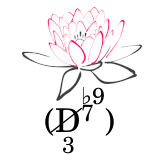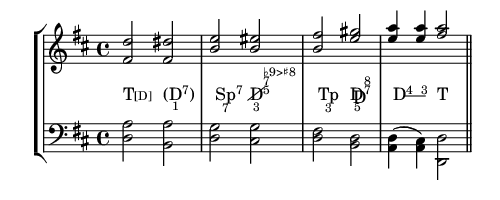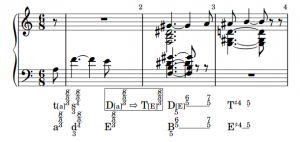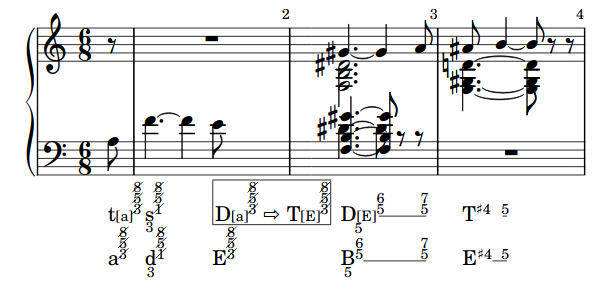harmonyli.ly is a LilyPond snippet for harmony analysis symbols into a score. It can deal with symbols of the scale-step-theory as well as symbols of the funktional harmony theory.
In the beginning, I simply wanted to find the best way to use analyzed music examples in musicological files. On the one side, the bundle of LaTeX, MusicTeX und Harmony offers such an opportunity — in general. But practically, MusicTeX is too complicate. It decreases productivity. On the other side, we can use LaTeX and LilyPond easily. But they alone do not fulfill the needs of musicology.
For closing this gap, I decided to develop harmonyli.ly : As a plugin for LilyPond files, it should be able to do, what harmony does for MusicTeX and LaTeX. But for writing the scores, one should be able to use the well-known and simple LilyPond language.
Here you see an example of what the result can realize.
Download and Usage
- Clone the GitHub repository harmonyli.ly or download it as a zip file.
- For using the library one must only include the file
harmonyli.lyinto one’s own Lilypond file. Example files show how this is down. - Read the tutorial that explained the details of using harmonyli.ly. Take a look at
doc/tutorial.pdfor use the online version of the harmonyli.ly-Tutorial.
harmonyli.ly Licenses
Copyright © 2019 Karsten Reincke, Hans Blum
The library harmonyli.ly may be used under the terms of the GPLv3 or the MIT. For details take a look at the file LICENSING.
The examples are licensed under the terms of the MIT license, the tutorial is distributed as CC-BY-SA file.
And in what way is this …
… article related to the topic ‘Sciences’? To write humanities papers (on Linux), you need an appropriate scientific LaTeX framework. For papers on musicology in particular, scientific texts must be expanded by music examples — mostly written with LilyPond and its libraries. That is the topic also this post wants to support.



